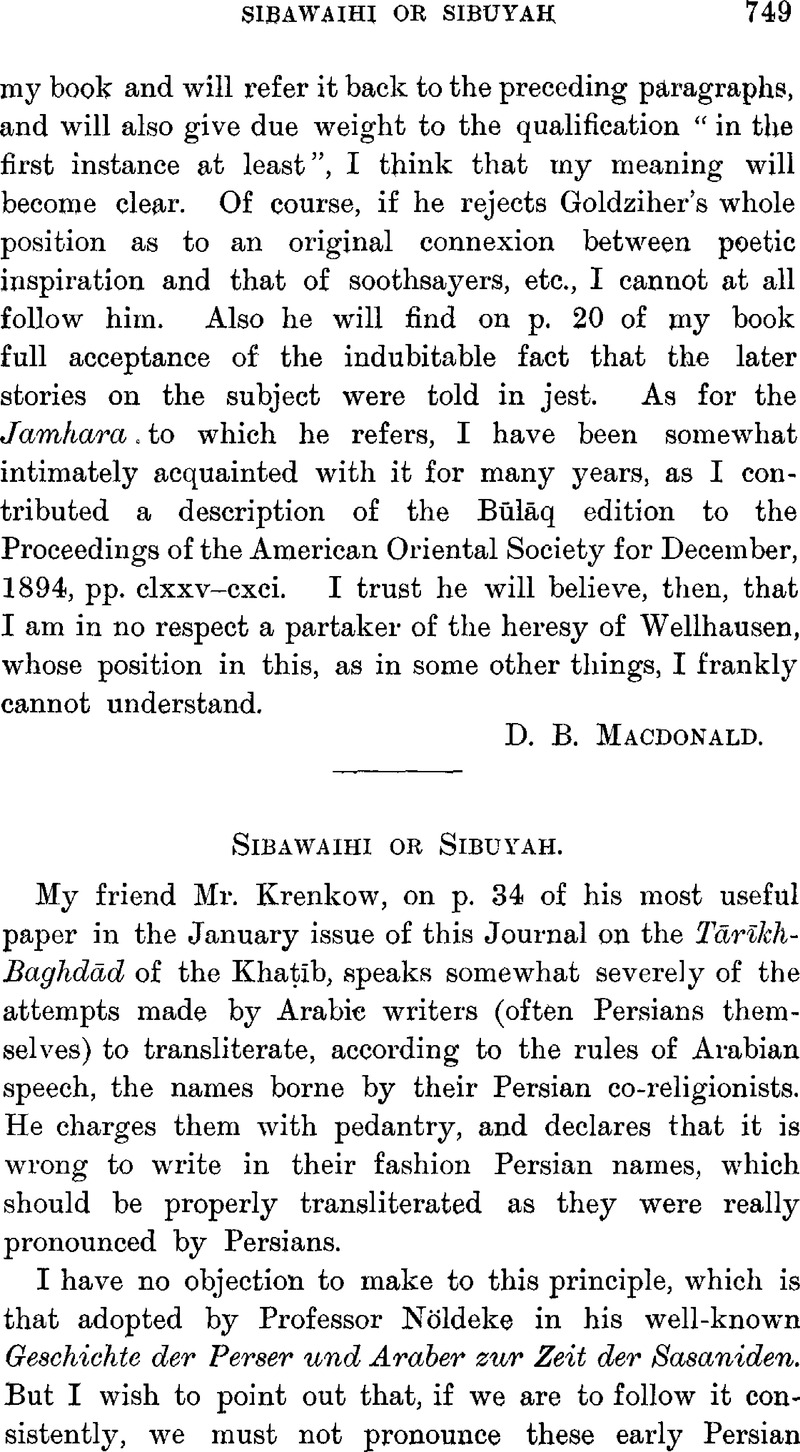No CrossRef data available.
Article contents
Abstract

- Type
- Miscellaneous Communications
- Information
- Copyright
- Copyright © The Royal Asiatic Society 1912
References
page 750 note 1 A number of other names of the same kind are to be found in Hoffmann's, G.Auszüge aus Syrischen Akten Persischer Märtyrer (1880)Google Scholar. Hoffmann, renders them Bābhowai (p. 58), Burzowai (93), Dēndowai (56), Gushnowai, (70), Narsowai (103), Šērowai (77): these appear conclusive as to the pronunciation of the last syllable, as wai or wē, not yahGoogle Scholar.
page 750 note 2 Mr. A. G. Ellis has reminded me that we probably have an Achæmenian name of the same formation in Bigvai (Ezra ii, 2, 14), which seems to be the Greek Baγώας, and was most likely pronounced in Persian Bayhōē; this would be the hypocoristic of some longer name of which the first element is Bagha, God.




